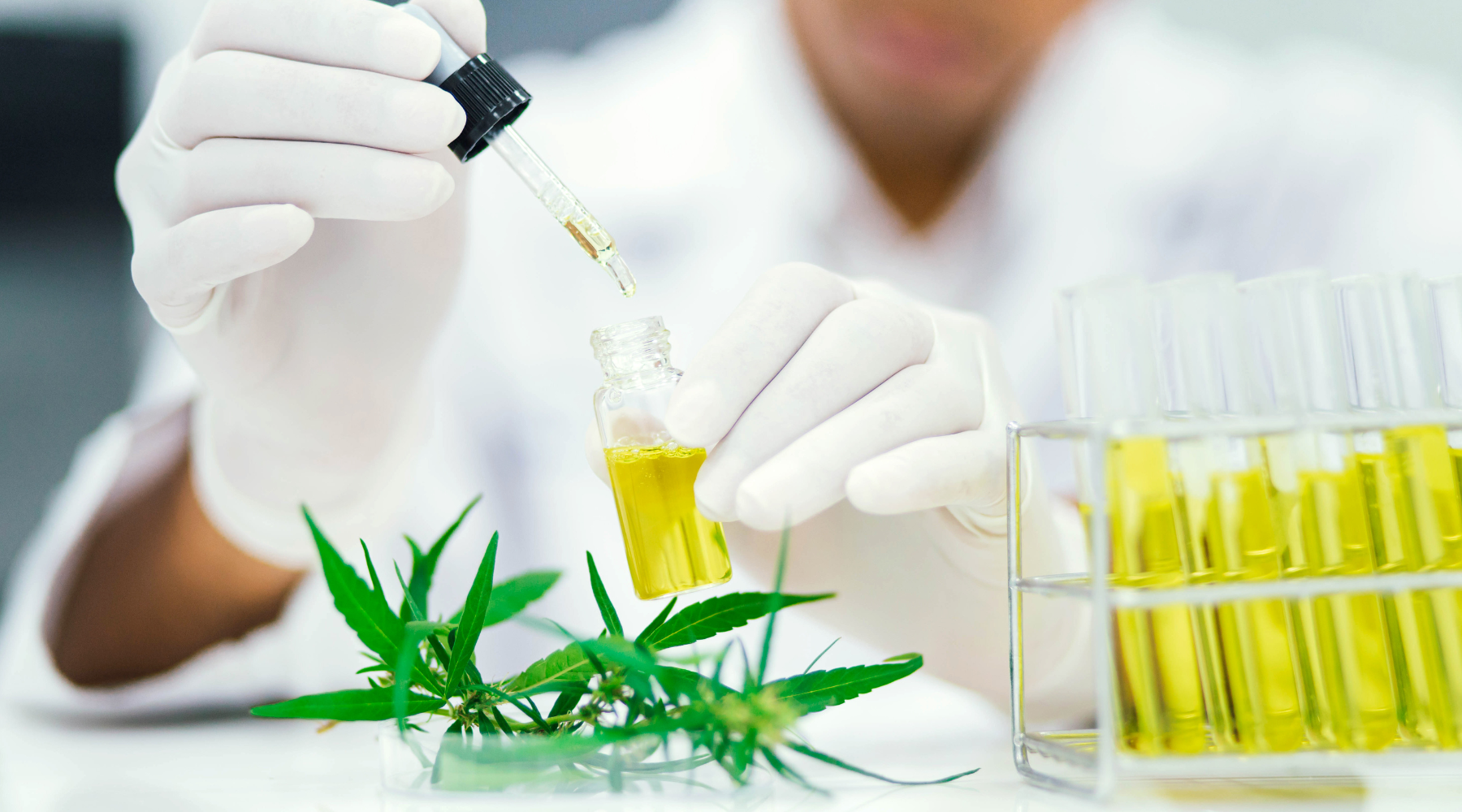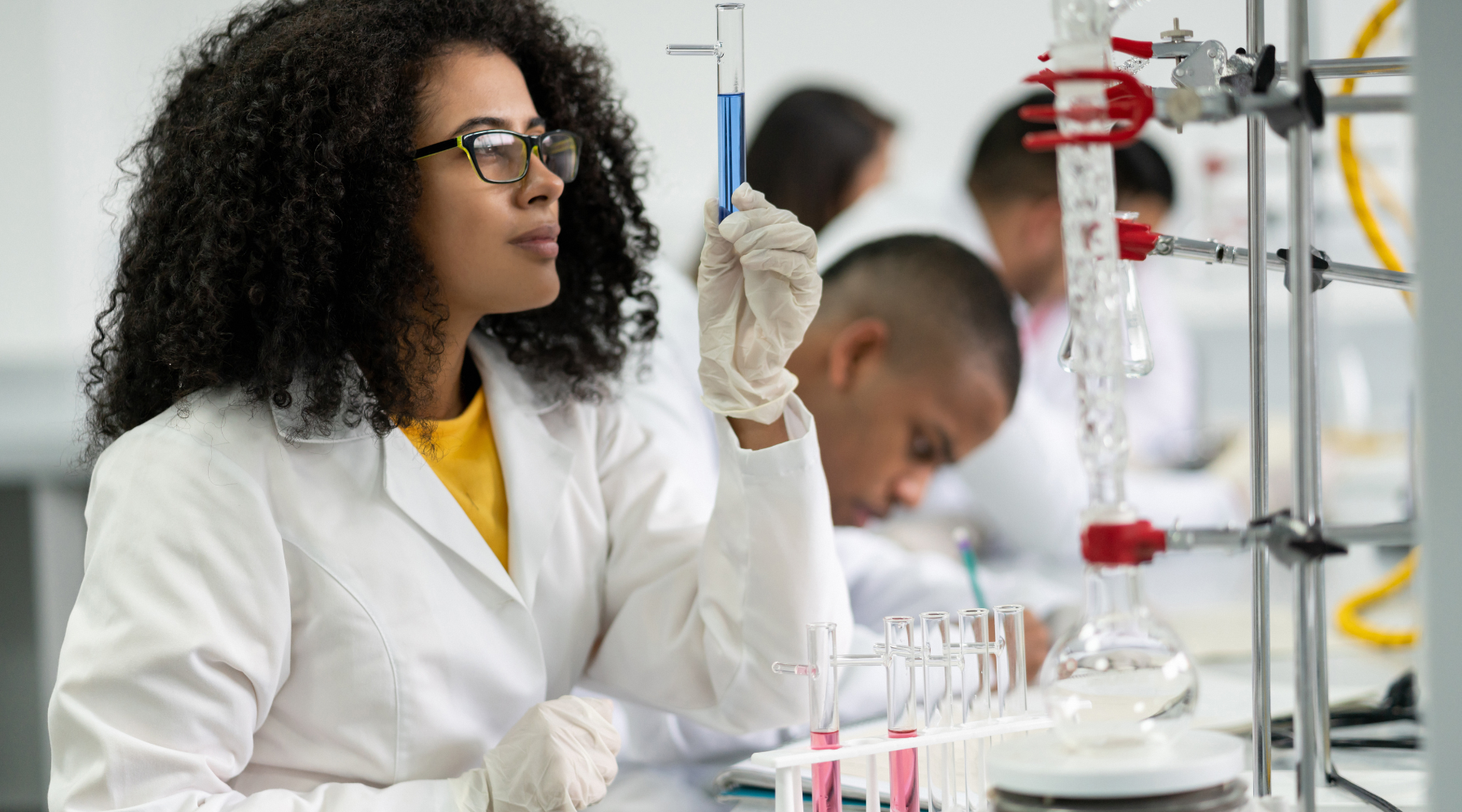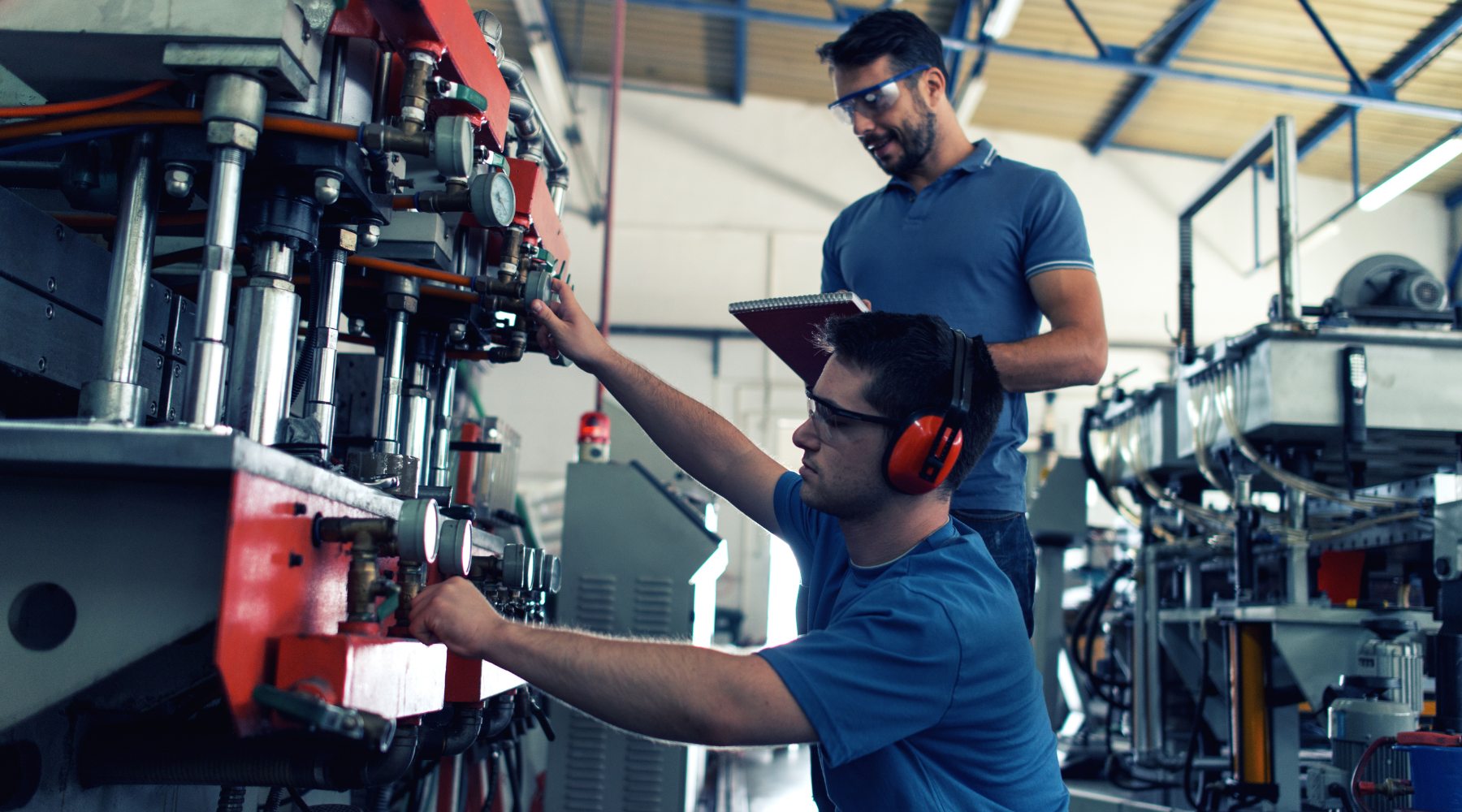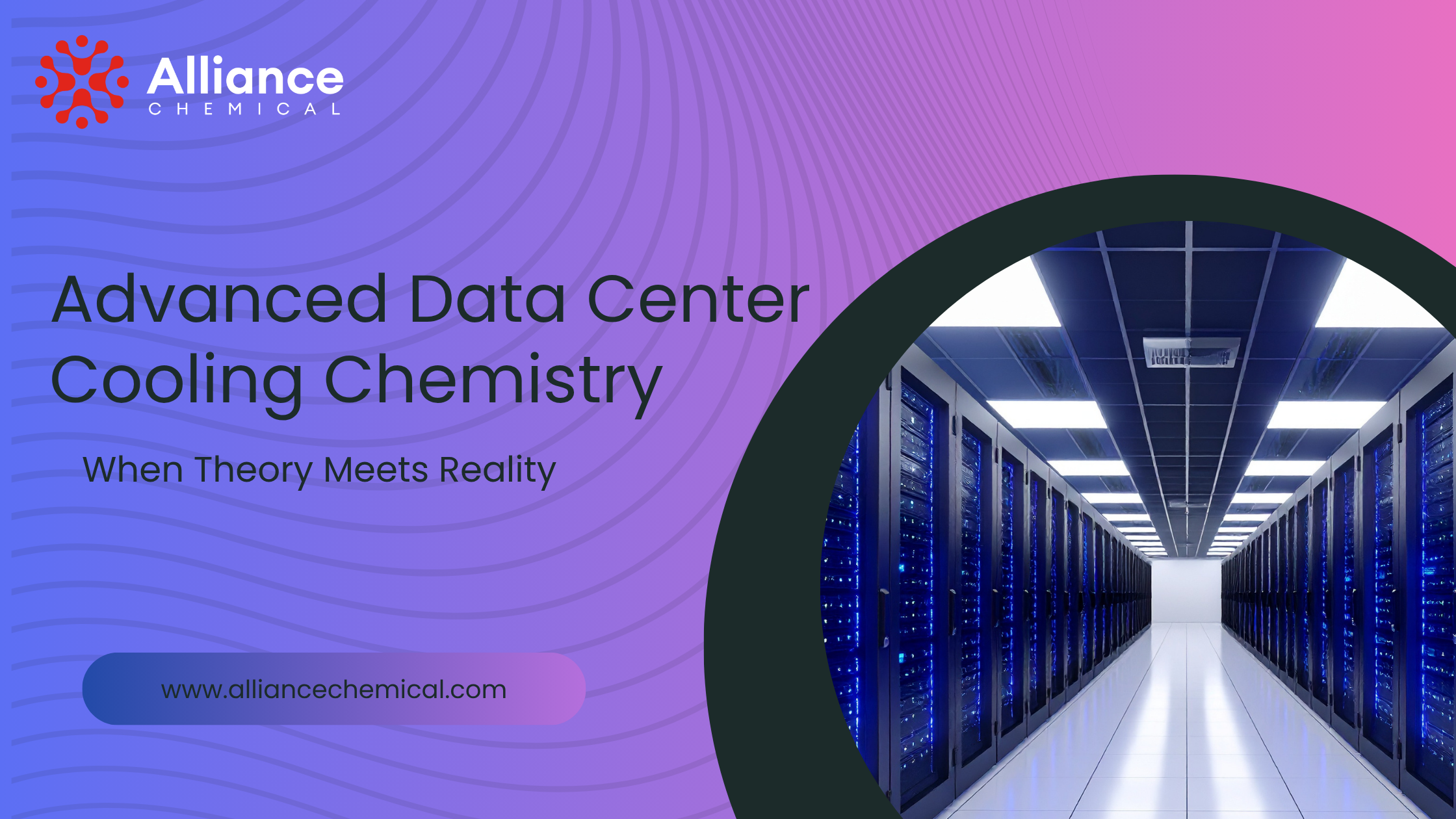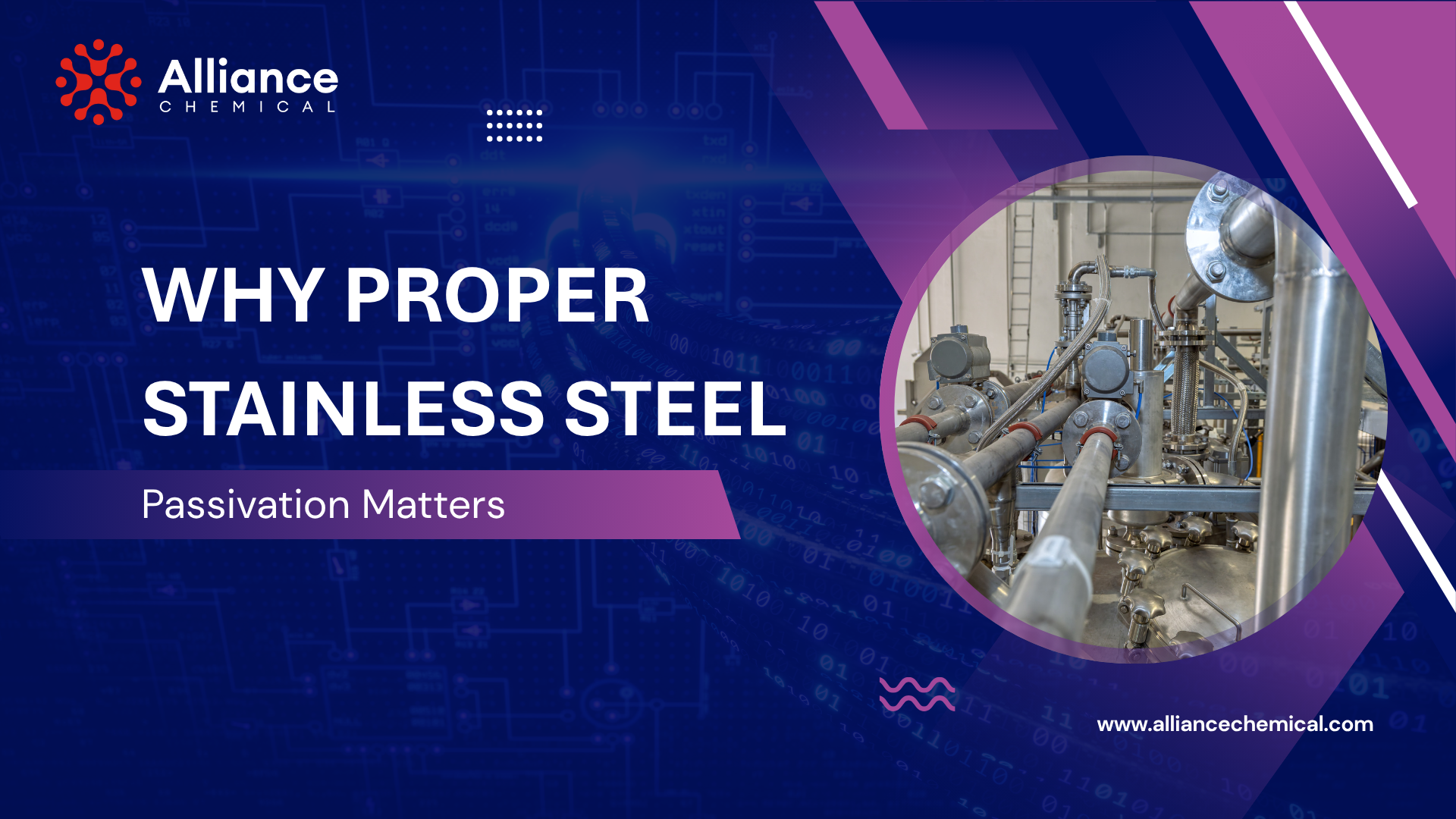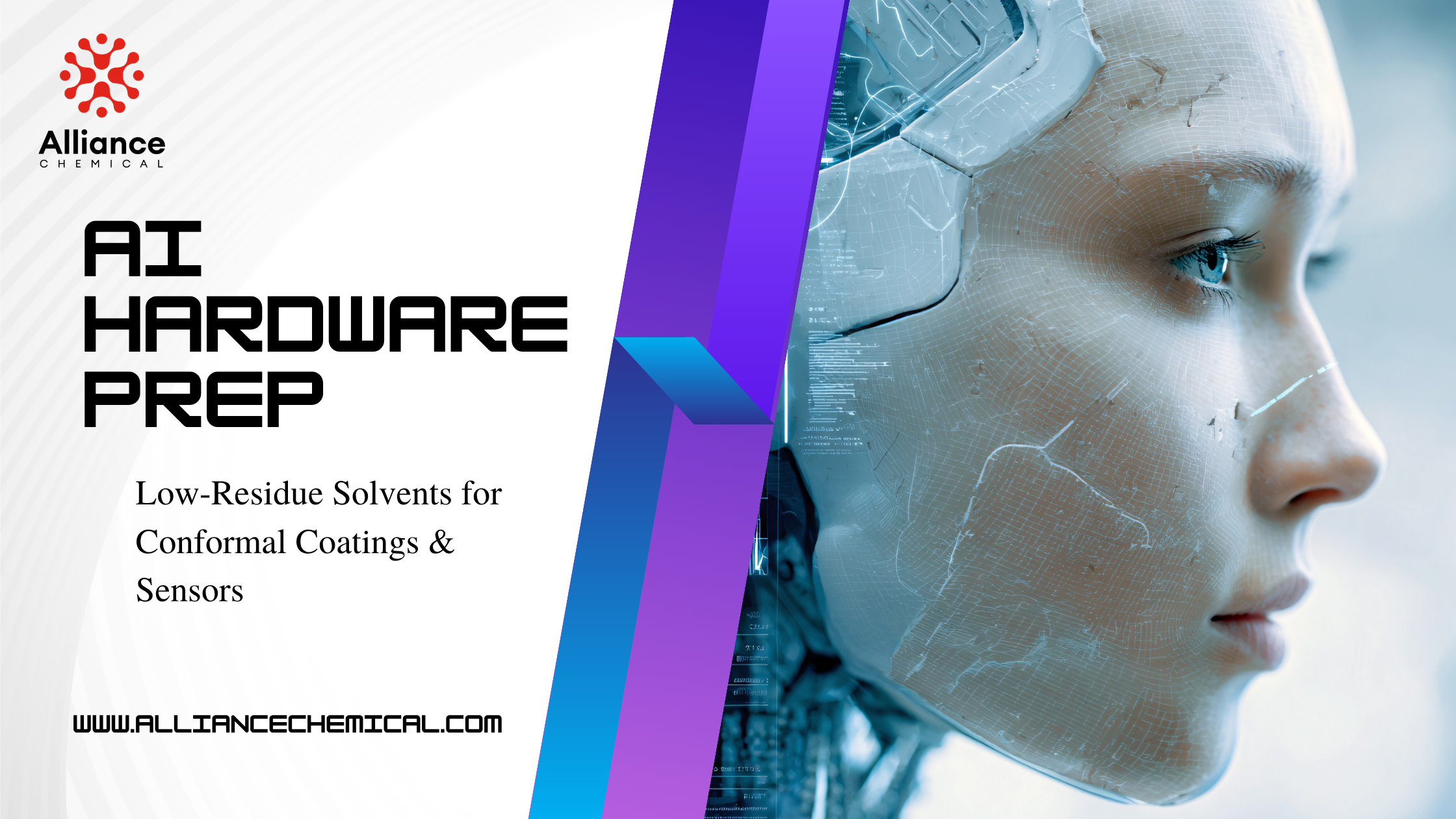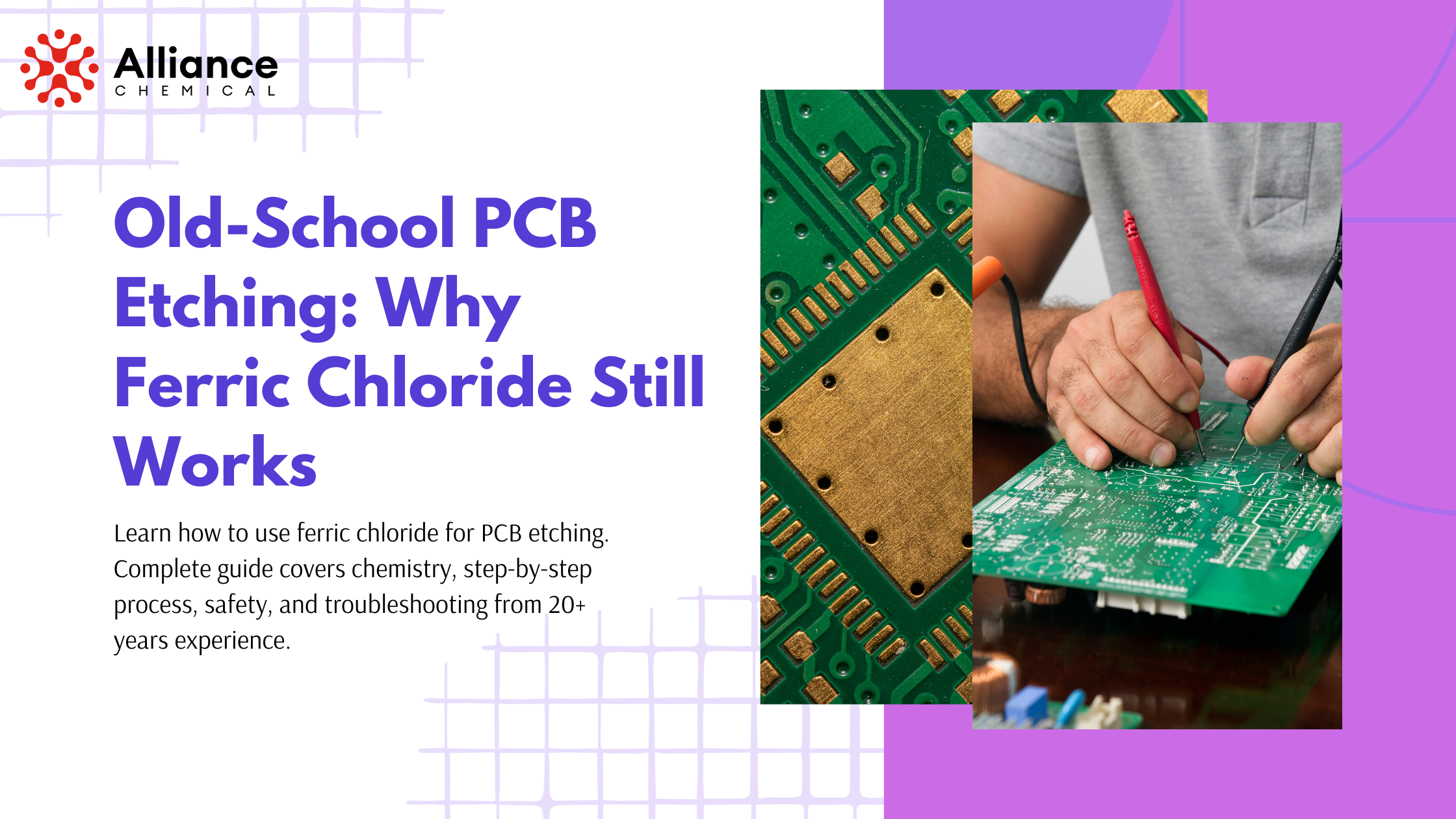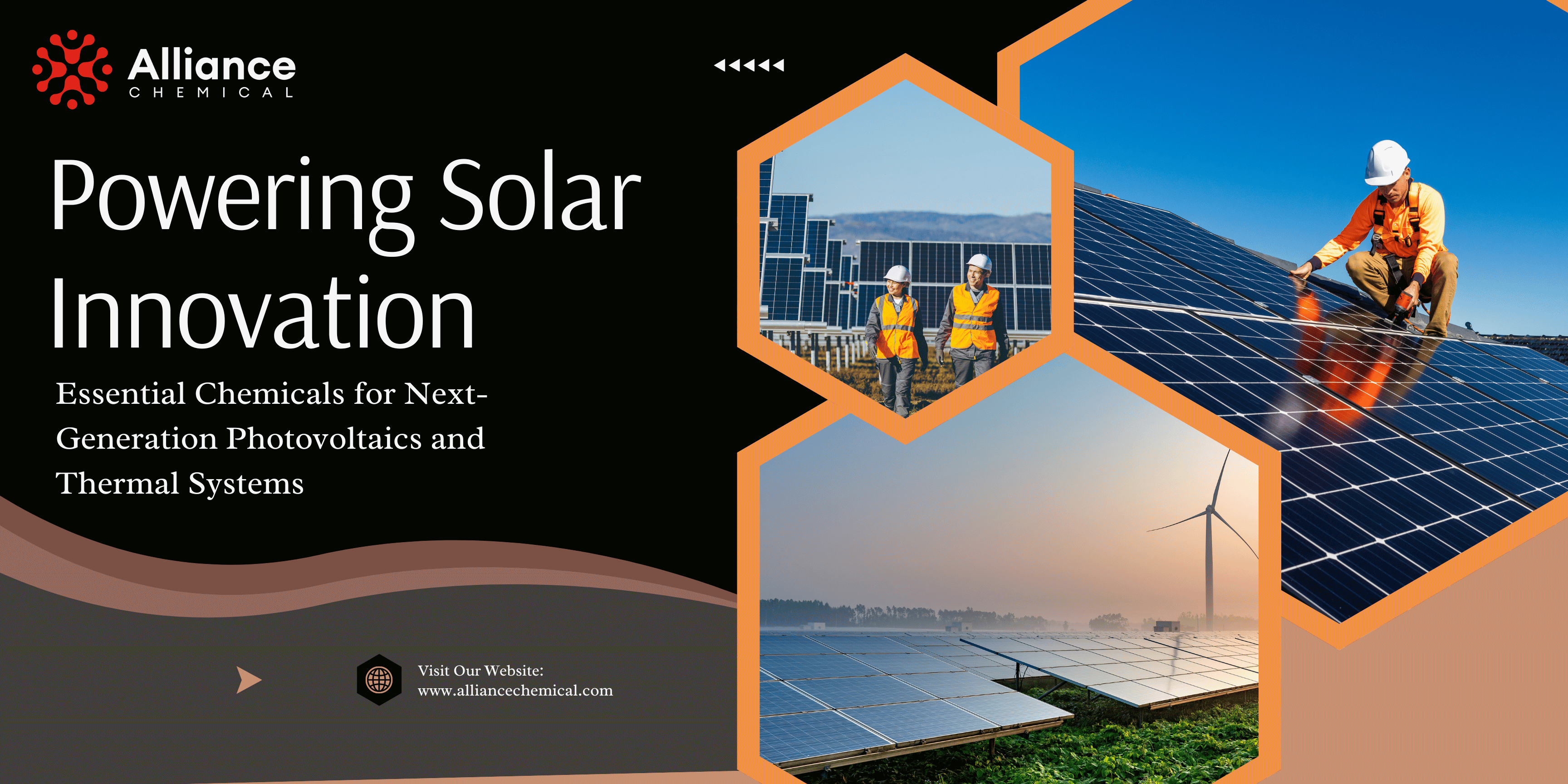
Powering Solar Innovation: Essential Chemicals for Next-Generation Photovoltaics and Thermal Systems
Table of Contents
Summary
💡 Frequently Asked Questions
Find quick answers to common questions about powering solar innovation: essential chemicals for next-generation photovoltaics and thermal systems.
Estimated Reading Time: 30–40 minutes
Disclaimer: The information in this blog post is for general guidance only. Always consult specialists and review local regulations when handling chemicals or designing industrial processes. This post exceeds 6,000 words for comprehensive coverage.
Table of Contents
- 1. Introduction
- 2. Why Solar Power Keeps Growing
- 3. Core Solar Technologies: PV & Thermal
- 4. Essential Chemicals in Solar Manufacturing
- 5. The Extended Solar Cell Fabrication Process
- 6. Choosing the Right Chemicals: Key Considerations
- 7. Safety, Handling, and Compliance
- 8. Environmental Impact & Sustainable Practices
- 9. Real-World Application: A Solar Startup’s Success Story
- 10. Emerging Trends & Future Outlook
- 11. Frequently Asked Questions (FAQ)
- 12. Conclusion & Next Steps
- 13. References & Resources
1. Introduction
In the quest for clean and sustainable energy, solar power has risen as a leading contender. Recent years have seen unprecedented growth in solar installations—from tiny residential rooftops to sprawling utility-scale farms that blanket thousands of acres. According to multiple industry reports, the cost of solar-generated electricity continues to drop, making it competitive with traditional fossil fuels.
Yet behind these shining panels lies a hidden network of chemical processes that make advanced solar energy possible. From purifying silicon and etching wafers to managing temperatures in solar thermal systems, chemicals are the backbone of modern solar technology. In particular, four chemical categories—acids, solvents, glycols, and deionized water—stand out as crucial drivers of efficiency, durability, and cost-effectiveness.
This blog post takes a **deep dive** into how these chemicals enable next-generation photovoltaics (PV) and thermal systems. We’ll explore their roles in manufacturing, highlight best practices for selection and handling, and show real-world examples. By the end, you’ll see why the right chemical choices can elevate solar technology to new heights in both performance and sustainability.
2. Why Solar Power Keeps Growing
The global energy landscape has shifted dramatically in the past two decades. Much of this change can be attributed to solar power’s steady climb toward affordability, reliability, and widespread consumer acceptance. Here are five major forces propelling solar adoption:
- Cost Competitiveness: Technological breakthroughs—often rooted in improved chemical processes—have slashed the per-watt price of solar panels, allowing them to compete with, or even undercut, traditional fossil-fuel energy.
- Policy & Incentives: Governments worldwide implement tax credits, subsidies, and renewable energy mandates, making solar more financially attractive to businesses and homeowners.
- Climate Change Concerns: Societies are increasingly aware of the need to reduce carbon emissions, pushing solar as a key solution for decarbonizing the energy sector.
- Technological Innovations: Advances such as bifacial panels, solar tracking systems, and high-efficiency cell architectures keep raising the bar, further improving yield and return on investment.
- Energy Independence & Security: Many regions see solar as a way to reduce dependence on imported fuels, stabilizing energy costs and boosting resiliency.
In short, solar power’s growth is multi-faceted, blending market pressures, environmental imperatives, and government incentives. At the core of these developments are improved **production methods**—particularly in the chemical realm—enabling manufacturers to create panels that are both lower-cost and higher-performing.
3. Core Solar Technologies: PV & Thermal
Before we delve into specific chemicals, it’s vital to understand the two primary technological pathways in solar energy:
3.1 Photovoltaic (PV) Systems
Photovoltaic systems directly convert sunlight into electricity using semiconductor materials (commonly silicon). Each solar cell contains layers of silicon doped with elements that create p-n junctions. When sunlight strikes these cells, electrons are energized, generating an electric current. Key manufacturing steps include:
- Ingot & Wafer Production: Silicon is melted, crystallized into ingots, then sliced into thin wafers.
- Surface Cleaning & Etching: Acids remove saw damage and create microscopic textures to reduce reflection.
- Doping & Diffusion: Introducing impurities like phosphorus or boron to form p-type or n-type layers.
- Metallization & Anti-Reflective Coatings: Adding front/back contacts and coatings to further improve light capture.
- Module Assembly: Cells are encapsulated in EVA (ethylene-vinyl acetate), sealed with front glass and backsheet, then framed.
In each of these steps, precise chemical formulations—particularly acids for texturing, solvents for cleaning, and DI water for rinsing—play a pivotal role in achieving high-efficiency cells.
3.2 Solar Thermal Systems
Solar thermal systems, by contrast, harness the sun’s heat instead of converting it directly into electricity. They typically use **collectors** to absorb sunlight and transfer the resulting heat to a fluid (often water mixed with glycol). Common applications include:
- Domestic Hot Water Systems: Rooftop collectors that provide households with heated water for showers, washing, etc.
- Space Heating: Larger arrays used in cold climates to warm buildings.
- Industrial Heat Processes: Factories can use solar-generated steam or hot water in manufacturing lines, cutting down on fossil fuel consumption.
- Concentrated Solar Power (CSP): Mirrors or lenses concentrate sunlight, generating very high temperatures that drive steam turbines for electricity production.
Glycols and corrosion inhibitors are key to maintaining these systems. The fluids must handle wide temperature swings (sub-zero nights to boiling daytime temps), remain chemically stable, and avoid corroding pipework or collector surfaces over extended periods.
4. Essential Chemicals in Solar Manufacturing
The heart of this article: how **acids, solvents, glycols, and deionized water** enable the high-tech wizardry behind solar power. While each category has multiple sub-varieties, we’ll focus on general roles and examples that reflect common industry usage.
4.1 Acids for Etching & Cleaning
Acids are indispensable in shaping, doping, and purifying solar cells. They remove unwanted layers (oxides, organic residues), create surface textures that enhance light absorption, and facilitate doping processes for p-n junction formation. Common examples include:
- Hydrochloric Acid (HCl): Often used in wafer cleaning steps to dissolve metallic contaminants. Concentrations like 37% Technical Grade are typical.
- Sulfuric Acid (H2SO4): Serves as a powerful oxidizing and cleaning agent, widely employed to strip organic contaminants, especially in combination with hydrogen peroxide for the “piranha” etch.
- Nitric Acid (HNO3): Facilitates texturization, especially for multicrystalline silicon wafers. Higher-purity versions like 70% ACS Grade ensure minimal metal contamination.
- Phosphoric Acid (H3PO4): Used in doping processes and for certain passivation or cleaning steps. Available in high-purity forms, such as 85% ACS Grade.
Depending on the desired cell architecture, acid mixes might vary in temperature and concentration, targeting specific microstructures. A slight tweak in acid ratio can lead to a significant boost in cell efficiency.
4.2 Solvents for Residue Removal & Surface Prep
Solar cell manufacturing involves multiple photolithography or doping steps that use resists, adhesives, and other organic materials. **Solvents** remove these residues and ensure a pristine surface before metal contacts or encapsulation layers are applied. Key roles include:
- Photoresist Stripping: Doping processes often involve photoresist patterns that need total removal without damaging underlying layers.
- Adhesive Cleaning: Module lamination adhesives can leave traces on cell edges or frames, requiring solvents for cleanup.
- Degreasing & Particle Removal: Fabrication lines must maintain extremely low contamination levels, so solvents like acetone or isopropyl alcohol (IPA) are used extensively.
Common solvents in solar include acetone, isopropyl alcohol, methyl ethyl ketone (MEK), and xylene. Each has different evaporation rates and solvent power, requiring careful selection for a given process step.
4.3 Glycols for Thermal Regulation
Solar thermal systems rely on **heat-transfer fluids** to move thermal energy from collectors to storage tanks or usage points. In PV manufacturing, cooling loops also ensure stable wafer processing temperatures in certain high-heat equipment. **Glycols**—mixed with water—are particularly valued for:
- Freeze Protection: Preventing fluid from turning to ice in cold weather, which could damage pipes and collectors.
- Corrosion Inhibition: Many glycol formulations include additives that protect metal surfaces from oxidative wear.
- Thermal Stability: Ability to handle temperature swings without breaking down or losing efficacy.
Two main players:
- Ethylene Glycol: Excellent heat transfer but toxic if ingested—commonly used in closed-loop industrial settings.
- Propylene Glycol: Less toxic, often used where accidental leaks could pose an environmental or health risk. See inhibited propylene glycol for robust protection.
These glycols also appear in concentrated solar power (CSP) systems that reach even higher temperatures, though some CSP plants switch to specialized heat-transfer oils or molten salts at extremely high operating points. Still, glycol solutions remain essential in smaller-scale or moderate-temperature applications.
4.4 Deionized Water for Ultra-Pure Processing
Deionized water (DI water) is water from which ions and minerals have been removed, yielding extremely low conductivity. In solar manufacturing, DI water is used throughout the process flow, especially for:
- Rinsing & Cleaning: Removing chemical residues without introducing new contaminants (ions, metals) onto wafers.
- Equipment Cooling: Certain wafer saws or polishing tools require DI water to avoid depositing unwanted minerals on surfaces.
- Boiler Feed & Steam Generation: Some advanced processes that involve steam cleaning or doping can use DI water to prevent scaling.
DI water’s purity ensures that final solar cells have fewer defects and perform consistently. However, **handling it** can be tricky—DI water is so ion-hungry that it can corrode metal surfaces over time if they are not protected. This phenomenon highlights the need for specialized materials in DI water loops. Check out Alliance Chemical’s Deionized Water and Water Products for reliable solutions.
5. The Extended Solar Cell Fabrication Process
While **acids, solvents, glycols, and DI water** are central, the actual fabrication of a solar cell or thermal system is a multi-step journey. This section offers a more expansive look at how chemicals come into play at each stage, ensuring we reach a thorough understanding of solar manufacturing’s chemical intricacies.
5.1 Silicon Ingot Casting & Wafer Slicing
Modern PV modules typically use crystalline silicon, either monocrystalline or multicrystalline. Manufacturers melt high-purity polysilicon (often 99.9999% pure) in crucibles, then crystallize it into ingots or bricks. Chemicals factor in here by:
- Crucible Coatings: Specialized coatings, often containing silicates or other compounds, prevent contamination from the crucible walls.
- Slicing Lubricants: Once cooled, ingots are sliced into wafers using wire saws. These saws frequently rely on fluid-based lubricants—some containing glycol derivatives—to reduce friction and trap silicon kerf (dust).
- Cooling Water Quality: DI water might be used in certain saw cooling setups to avoid mineral buildup, preserving wafer flatness.
Although acids and solvents aren’t heavily used at this ingot stage, it sets the stage: any contamination introduced here can cascade into subsequent manufacturing steps, reducing yields.
5.2 Texturization & Surface Preparation
Once the wafers are sliced, they often undergo **texturization** to create tiny pyramidal or random surfaces that reduce reflection. This step commonly involves acids such as **nitric** or **hydrofluoric acid** (in specific blends), plus rinse cycles with DI water. Key points:
- Controlled Etch Rates: The acid concentration and bath temperature are carefully calibrated to produce the desired surface topology.
- Rinse & Dry Cycles: After texturing, wafers are rinsed in DI water baths and dried—often with IPA-based vapor drying to avoid water spots.
- Waste Management: The spent acid baths contain dissolved silicon and must be neutralized or reprocessed in compliance with environmental standards.
The result is a wafer surface that traps more sunlight and channels photons into the cell’s active region. Even a 1–2% gain in light absorption can significantly boost the module’s final wattage output.
5.3 Doping & Diffusion
The creation of a **p-n junction** is arguably the heart of a PV cell. Manufacturers deposit dopants (typically phosphorus for n-type doping or boron for p-type doping) onto the wafer, then drive them in at elevated temperatures. Chemicals are used in:
- Dopant Sources: Liquid or gaseous dopant solutions—sometimes containing phosphoric acid—are carefully applied.
- Etch-Back & Cleaning: Unwanted dopant residue is stripped off the wafer edges or backside using acids and solvents.
- Atmospheric Control: In diffusion furnaces, the atmosphere might include nitrogen or oxygen flows regulated to precise dryness, sometimes assisted by chemical dryers or desiccants.
If doping is done incorrectly, the cell might suffer from poor fill factors or excessive recombination losses, drastically reducing efficiency. Hence, doping accuracy is a prime area where chemical purity matters intensely.
5.4 Metallization & Contact Formation
After doping, manufacturers create **metal contacts** on the front (sun-facing) and rear sides of the wafer. These contacts typically use silver or aluminum paste. **Solvents** come into play here, ensuring the paste or ink has the right viscosity and that any printing stencils remain clog-free. Key steps include:
- Screen Printing: The conductive paste is printed in fine lines to reduce shading on the cell surface.
- Drying & Firing: The paste is dried, then fired at high temperatures to form ohmic contact with the silicon.
- Cleanup: Excess paste or smudges can be removed using solvents, ensuring a neat final geometry.
The choice of solvent—and its evaporation profile—affects how well the paste prints onto the wafer. Inconsistent paste rheology can lead to incomplete or wide busbars, both detrimental to module performance.
5.5 Anti-Reflective Coating & Passivation
To minimize losses from reflection, most modern cells receive an **anti-reflective (AR) coating**, usually silicon nitride (SiNx) or titanium dioxide. Additionally, passivation layers reduce surface recombination by “capping” dangling bonds at the wafer surface. While these coatings are often applied via plasma-enhanced chemical vapor deposition (PECVD), cleaning steps and final rinse cycles might rely on DI water or mild solvents to remove particulates prior to deposition.
5.6 Module Assembly & Encapsulation
The final stage transforms individual cells into robust modules. Steps include:
- Stringing & Tab Welding: Cells are connected in series/parallel arrays using solder-coated copper ribbons. Fluxes and mild solvents may be employed for residue removal.
- Lamination: The cell strings are sandwiched between EVA (encapsulant film), front glass, and a backsheet, then heated under vacuum to cure. Any leftover adhesives or sealing compounds might require solvent cleanup around edges.
- Framing & Junction Box Attachment: The module’s aluminum frame is attached, and a junction box is sealed in place. Solvents can remove excess sealant to present a neat finish.
Once fully encapsulated, the modules are tested for output power, visual defects, and reliability under standardized conditions. Any contamination introduced at this stage can hamper long-term durability, so meticulous chemical management remains paramount to success.
6. Choosing the Right Chemicals: Key Considerations
Not all **acids, solvents, glycols, or DI water** are created equal. The solar industry’s drive for higher efficiency and reliability means even minute impurities can cause big problems. Here are key factors to weigh when selecting these chemicals:
- Purity: “ACS grade” or “electronic grade” often indicates low metal ions and minimal organic contaminants. For instance, ACS-grade acids help keep doping lines pristine.
- Compatibility: Ensure the chemical is safe for your existing equipment—some solvents degrade plastic tubing, while DI water can corrode non-stainless metals.
- Inhibitors & Additives: For glycol-based heat transfer fluids, look for corrosion inhibitors that match your piping material (copper, aluminum, steel, etc.).
- Concentration: The acid or solvent concentration can drastically affect etch rates or cleaning efficiency. Overly high concentration might cause wafer breakage or over-etching.
- Supplier Reliability: Consistent product quality and on-time delivery matter. A single delayed batch can halt production lines, leading to lost revenue.
- Local Regulations & Safety: Some regions have strict controls on storing or disposing of hazardous materials (e.g., hydrofluoric acid). Understand these constraints before committing to a specific chemical plan.
7. Safety, Handling, and Compliance
Solar manufacturing deals with chemicals that are corrosive, flammable, or otherwise hazardous. A robust safety culture is non-negotiable. Key aspects include:
Basic Safety Measures
Ensure you have:
- Appropriate PPE (gloves, goggles, face shields, aprons).
- Well-ventilated work areas or fume hoods.
- Spill containment kits, including neutralizers for acids/bases.
- Up-to-date safety data sheets (SDS) and worker training programs.
7.1 Storage & Inventory Management
Corrosive or volatile chemicals require specialized storage conditions. For example, **acids** like HCl or H2SO4 generally need acid-proof cabinets with secondary containment. Solvents like acetone or MEK should be in flame-resistant enclosures with proper ventilation.
Implementing a robust inventory system (e.g., barcoding) helps track usage, reduces the risk of expired chemicals, and ensures compliance with local or national regulations (e.g., OSHA in the U.S., REACH in Europe).
7.2 Environmental Controls & Waste Management
**Acidic or basic effluents** from etching baths can harm the environment if discharged improperly. Facilities must neutralize these effluents to acceptable pH levels or treat them in specialized waste systems. **Solvent vapors**, meanwhile, may require air scrubbing or carbon filtration before release. Neglecting these procedures can lead to hefty fines or legal action.
7.3 Emergency Protocols
Given the hazards, thorough training in **emergency response** is vital. Staff should know how to:
- Activate chemical spill alarms and contain leaks.
- Use eyewash stations and safety showers.
- Handle injuries from acid/solvent exposure.
- Coordinate evacuation if fumes or fires pose immediate threats.
This is not just about avoiding fines; it’s about protecting employees, nearby communities, and the facility itself from catastrophic incidents.
8. Environmental Impact & Sustainable Practices
While solar energy is lauded for its **clean power**, the manufacturing process is not entirely free of environmental concerns. Chemicals used in production can be harmful if poorly managed, and disposal of old solar panels raises end-of-life questions. However, the industry is making strides toward greener practices:
8.1 Reducing Chemical Usage
Research labs worldwide aim to minimize the volume and toxicity of chemicals used. For instance, new texturing methods or doping techniques can slash acid consumption by half or more. Some factories recycle certain baths—filtering out impurities so the same acid or solvent can be reused multiple times.
8.2 Life-Cycle Analysis
When evaluating solar’s overall carbon footprint, a thorough **life-cycle assessment (LCA)** accounts for material extraction, chemical production, panel manufacturing, distribution, and disposal/recycling. Many analyses show that solar panels repay their “energy debt” (the energy required to manufacture them) within 1–3 years, depending on location and technology. Improved chemical efficiency can shorten this payback time further.
8.3 Panel Recycling & Material Recovery
**Solar panel recycling** is a growing field. It often involves dismantling modules, recovering aluminum frames and glass, and processing cells to retrieve silicon and precious metals (silver). Certain solvents are used to dissolve encapsulant layers, while mild acids can help separate metallic contacts. As the industry matures, new recycling processes aim to handle the expected surge of end-of-life panels in the coming decades more efficiently and responsibly.
8.4 Green Chemistry & Solvent Alternatives
In alignment with “green chemistry” principles, some manufacturers explore less hazardous solvents (e.g., **bio-based solvents** or **low-VOC** formulations) and acid blends that reduce harmful byproducts. The push toward an **environmentally sound** supply chain reflects a broader industry trend: to ensure solar energy is as sustainable as possible from the lab to the landfill (or recycler).
9. Real-World Application: A Solar Startup’s Success Story
Note: This case study is illustrative and not tied to a specific real-world company, but reflects typical challenges and solutions in the industry.
9.1 Background
SunBright Cells, a fledgling solar startup, set out to develop a high-efficiency PV panel targeting residential markets. They faced two major hurdles:
- Inconsistent Wafers: Early prototype runs showed wafer breakage rates over 10%, plus variable doping profiles leading to subpar efficiencies.
- Unreliable Solar Thermal Pilot: In parallel, SunBright tested a solar thermal system for large commercial rooftops. Using plain water as the heat-transfer fluid led to repeated freeze-thaw pipe damage in colder regions.
9.2 Upgrading the Chemical Toolbox
After consultations with chemical experts and equipment vendors, SunBright implemented the following measures:
- High-Purity Acids & Solvents: They switched to ACS-grade nitric acid and isopropyl alcohol for wafer cleaning and doping steps, reducing contamination that caused doping irregularities.
- Refined Etching Protocol: Using a carefully calibrated mix of nitric and hydrofluoric acid, they achieved more uniform texturing while cutting wafer breakage by half.
- Inhibited Propylene Glycol Loops: The new thermal pilot replaced plain water with a propylene glycol solution. This fluid not only provided freeze protection down to -20°C but also included corrosion inhibitors for the copper/steel pipes.
- Improved Rinsing System: DI water with continuous conductivity monitoring ensured that post-etch residues were effectively removed, enhancing cell efficiency.
9.3 Results & ROI
- Boost in Cell Efficiency: Efficiency increased from an average of 18.7% to 20.1%. While a modest-sounding 1.4% jump, this equated to a significant output gain over thousands of panels.
- Reliability in Cold Climates: The thermal pilot system faced zero freeze-related downtime over a full winter season, bolstering the startup’s reputation in northern markets.
- Reduced Waste & Costs: Fewer broken wafers lowered production expenses, while the extended lifespan of acid baths, thanks to better filtration and control, cut chemical waste by 25%.
- Investor Confidence: With consistent production metrics and safer processes, SunBright Cells attracted additional venture capital, enabling them to scale their pilot line to full commercial output.
This case underscores how **the right chemicals**, combined with robust process controls, can transform a precarious manufacturing line into a stable, profitable operation. Quality inputs—especially in acids, solvents, glycols, and DI water—yield consistent outputs.
10. Emerging Trends & Future Outlook
The solar industry continuously evolves, with researchers and companies vying to squeeze every fraction of efficiency out of panels while improving reliability and lowering cost. Here are some forward-looking developments and how they intersect with chemical usage:
10.1 Perovskite & Tandem Cells
Perovskite materials promise high efficiency and simpler manufacturing compared to silicon. However, these structures are sensitive to moisture and require specialized **solvent engineering** for solution-based deposition. Overcoming stability challenges remains key, and better encapsulation chemicals could be the deciding factor for mass-market adoption.
10.2 Printable & Flexible Photovoltaics
Thin-film technologies, such as CIGS (copper indium gallium selenide) or organic PV, can be “printed” onto flexible substrates. Chemical formulations for inks, solvents, and buffer layers become critical. Achieving consistent layer thickness and adhesion demands finely tuned chemistries that differ significantly from crystalline silicon lines.
10.3 Advanced Cooling & Hybrid Systems
Hybrid PV-thermal (PVT) systems that generate both electricity and hot water from the same surface area are gaining attention. These setups require advanced **coolant loops**—often employing glycols or specialized heat-transfer fluids—that must not only handle temperature but also integrate with the panel’s electronics without causing condensation or corrosion issues.
10.4 AI-Driven Process Control
As manufacturing lines become more sophisticated, **AI-driven sensors** track chemical concentrations, pH levels, and doping rates in real time. Automated dosing of acids or solvents ensures optimal, consistent conditions, lowering waste and boosting yields. This demands accurate chemical property data to feed the AI models, driving further standardization in chemical supply.
10.5 Green Chemistry & Zero-Waste Goals
Looking ahead, many factories aspire to **circular economy** models—where chemical streams are reclaimed, purified, and reused with minimal fresh input. This approach might involve advanced filtration membranes, on-site acid regeneration, or solvent recovery units. The synergy between environmental goals and cost savings is a powerful motivator to refine chemical usage further.
11. Frequently Asked Questions (FAQ)
-
Q: Are acids like hydrofluoric (HF) still common in solar cell manufacturing?
A: Yes, HF is frequently used for texturization or removing oxide layers. However, it’s extremely hazardous, so many lines are exploring safer acid blends or diluted HF processes. If HF is used, advanced safety protocols and specialized handling equipment are mandatory. -
Q: How often should solar thermal systems change or test their glycol solution?
A: Many experts recommend an annual inspection of pH, inhibitor levels, and freeze point. A complete fluid change might be needed every 3–5 years, depending on system usage and contamination. -
Q: Is DI water always better than distilled water?
A: DI water typically has even fewer ions than most distilled water, making it ideal for high-purity processes in solar manufacturing. But it can be more corrosive to certain metals, so ensure your system is materials-compatible. -
Q: Can I mix ethylene glycol and propylene glycol in the same system?
A: It’s not recommended. Each glycol type and inhibitor package is formulated for specific performance. Mixing them can alter freeze protection, corrosion inhibition, and stability. Flush and refill with a single, unified solution to avoid issues. -
Q: How do I handle large volumes of acid waste from etching baths?
A: Typically, factories have an acid waste treatment system (neutralization or chemical precipitation). Work with waste management providers to ensure regulatory compliance. Some advanced sites also use acid recovery systems. -
Q: Are there “eco-friendly” solvents that can replace common industrial solvents like acetone or xylene?
A: Yes, but it depends on your process. Bio-based or green solvents are emerging. You must verify that they achieve the same cleaning efficacy without harming the substrate or equipment. Pilot testing is crucial before full-scale adoption. -
Q: Do these chemical processes significantly offset the carbon benefits of solar?
A: While there is an environmental footprint tied to manufacturing, solar panels quickly “pay back” this energy and carbon cost after 1–3 years in sunlight, lasting 25–30 years. The net climate benefit remains positive. -
Q: Does the type of acid or solvent affect the final efficiency of a cell by a large margin?
A: Yes. Even small impurity levels or suboptimal etch rates can hamper doping uniformity and surface passivation, leading to lower efficiencies. The right chemical blend can yield a noticeable boost in cell output. -
Q: What’s the difference between technical grade and ACS grade acids?
A: Technical grade acids have higher permissible levels of impurities. ACS grade meets or exceeds the purity specifications set by the American Chemical Society, making it more suitable for sensitive semiconductor processes. -
Q: If I’m installing solar panels at my home, do I need to worry about these chemicals?
A: Typically no. By the time panels reach end-users, they’re sealed modules. Most chemical handling occurs in factories or large-scale thermal systems. Still, local codes might require antifreeze solutions for certain solar water heaters—so check if a propylene glycol system is recommended for your region.
12. Conclusion & Next Steps
From the initial **silicon ingot** to a fully encapsulated **solar panel** (or a functioning solar thermal loop), chemical processes are woven throughout the entire journey. **Acids** carve the optimal surface for light absorption, **solvents** keep wafer surfaces pristine, **glycols** enable stable heat transfer, and **deionized water** ensures the utmost purity at every rinse. Together, these chemical tools not only drive higher efficiency but also extend the operational life of solar systems—ultimately powering a more sustainable world.
In a rapidly advancing industry where panel efficiencies climb each year and new cell architectures emerge (like perovskites or tandem designs), the importance of reliable, high-quality chemicals will only grow. Whether you’re a startup refining your pilot line or a seasoned manufacturer scaling globally, an investment in the **right chemicals**—and the best practices to handle them—pays dividends in performance, cost savings, and environmental stewardship.
Ready to upgrade your chemical toolkit? Explore acids, solvents, glycols, and deionized water at Alliance Chemical. Our experts offer technical support, custom blends, and large-volume orders to suit the evolving needs of solar innovators.
By selecting chemicals carefully, managing them responsibly, and staying abreast of new solutions, your solar enterprise can maintain a competitive edge—delivering **cleaner, more efficient** energy to an ever-hungrier market.
13. References & Resources
- Alliance Chemical:
- IEEE Journal on Photovoltaics. “Advances in Silicon Cell Texturization Techniques,” 2024.
- National Renewable Energy Laboratory (NREL). “Solar Thermal Fluid Guidelines,” 2023.
- Solar Energy Industries Association (SEIA). “Best Practices in Solar Cell Manufacturing,” 2025.
- ASHRAE. “HVAC Applications: Chapter on Solar Heating Systems,” 2024.
- DOE (Department of Energy). “Energy Efficiency & Renewable Energy: Solar Office Highlights,” 2023.
- Green Chemistry Institute. “Solvent Substitution & Safer Alternatives,” 2023.
- OSHA. “Chemical Hazard Communication and Safe Handling,” current guidelines.
- EU REACH Regulations, updated 2024.
Disclaimer: This material is for informational purposes. Always consult technical experts and verify compliance with local regulations. Chemical properties, system performance, and results can vary based on design parameters, usage conditions, and environmental factors. For personalized guidance, contact Alliance Chemical.
